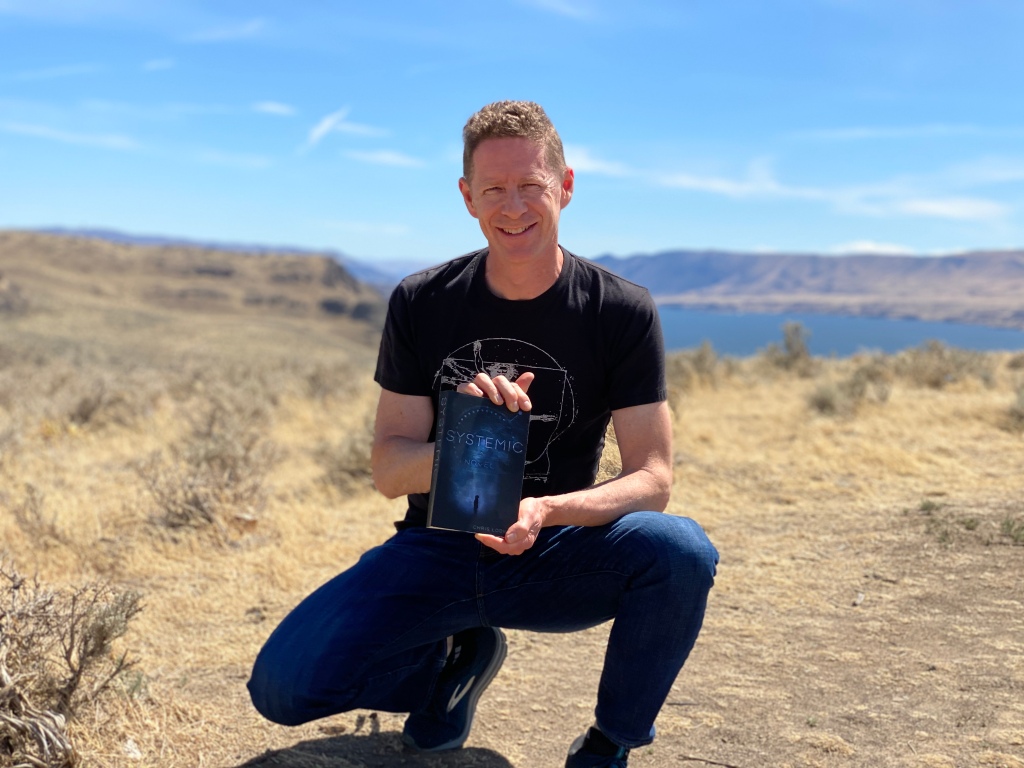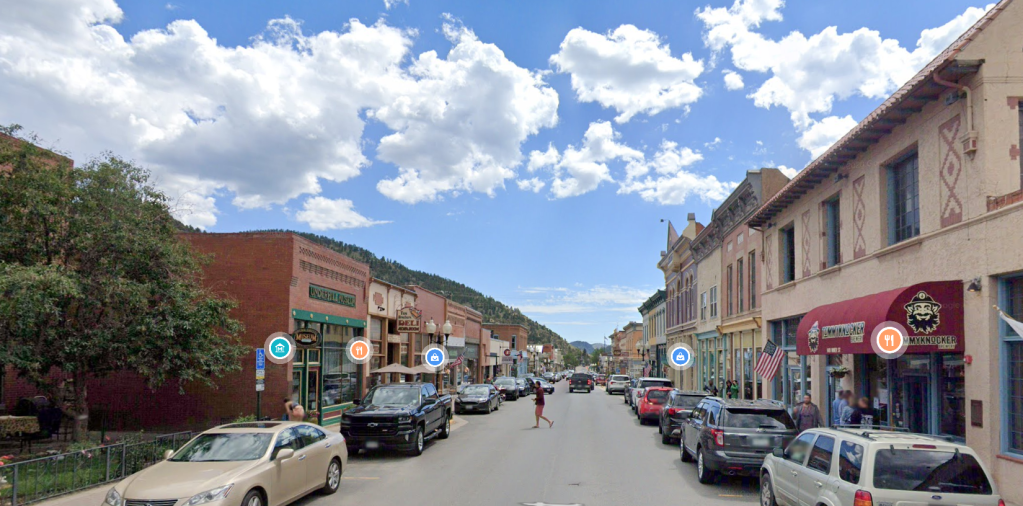I’m about to go onto a LitCon panel and discuss world building. While I’m pretty comfortable talking in front of folks, that doesn’t mean I don’t get nervous, especially since this is my very first panel discussion at a convention. So this post is really to help me get the jitters out. Hopefully I can prime the pumps well enough that I’ll sound intelligent and philosophical about the subject.
Setting the stage
I love cinematics and am particularly fond of long shots. You know those scenes in movies where the character is walking through a market or a massive kitchen in a Chinese restaurant or whatever and you see all the color and chaos around him or her? I love writing those. I strive to be almost photo-realistic in my descriptions. I like to explain how smells make you feel, or how the light works in a space. I’ve had many people tell me that reading Systemic is like watching a movie. That’s what I’m going for.
Sometimes the story needs a very specific setting. I have to get Lem from his job to his workspace. He needs to be feeling paranoid and nervous. Nothing makes you feel more looked at than being on a city bus, so let’s stick him on a bus. Will there be busses in the future? Of course! What about pizza parlors, taverns, and Indian restaurants? There’d better be, or I’m not going. Now I just need to make that bus or pizza joint believable. Who’s driving? How will soda machines work? Once I’m at the point where I find myself describing a scene for my own dorky enjoyment, I trim it back so that it just has the bits my readers need to get grounded.
Time frame
Systemic takes place on Earth several generations into the future. I know “several generations” is not a normal time horizon, but technology and AI in particular are moving fast. I was a little worried that the real world would beat me to my own story line. I mean, AIs dream these days, and make hallucinatory art, and write absurdist screenplays so who knows. Worse, what if things take some turn that makes my future impossible or irrelevant, the way smart phones make Star Trek communicators look quaint. I once made a $1000 bet with my then boss that, within ten years, I would be able to buy a car that could drive me from my home to work and park. Turns out I’m tragically optimistic and had a bit of wine in me. That was about ten years ago, so I try not to bring the subject up when he’s around. At any rate, I learned my lesson. “Several generations” it is.

Environment
Place plays a very big role in Systemic. I won’t go so far as to say “it’s a character in the book”, mostly because I find it annoying when people say that sort of thing, but I did spend an inordinate amount of time vocalizing and describing the sound exhausted feet would make shuffling through that particular grit of trail dirt, and making sure the shadows in the room were all leaning in the same direction.
The entire book actually sprang from a single image that popped into my head one day. At the time, I had no idea what the story was about, I didn’t even know it was sci-fi. For that matter, I didn’t even know it was a book. My little experiment on the bus was 100% about describing an evocative image. Within a couple of minutes, it was about a young woman hiking alone through a valley that was as dry and hot as a Las Vegas parking lot.

The Prower Valley, where most of the book takes place, is a bit of a mash up. The topography resembles a scene I saw driving between Yellow Stone and Missoula Montana. The biome is borrowed from the area around the Columbia Gorge in Central Washington state. That first scene placed the book in the western deserts—that’s the sagebrush-and-pockets-of-green-crouching-in-washes North Western desert, not the cacti-mesas-and-cow-skull South Western desert.
Once I figured out where the story was unfolding, I realized that many of the scenes would be staged in those small Western towns with one main street, free angled parking, and old mine carts-cum-flower pots decorating the corners. Once I understood Systemic was a sci-fi book I thought it would be interesting to stick with the locations and show what a AI-fueled dystopian future would look like in a small rural town in, say, central Idaho, instead of Neo-Francisco or wherever. What if the most important moments of the future happened in a town with two hundred people, an outfitters, and three bars?
Technology
My technology is there to make the story work, not the other way around. This is one of the reasons I didn’t even realized I was writing a sci-fi book at first. I didn’t start wondering what would happen if a given technology is brought to its logical conclusion. Rather, I considered what would need to be true to tell a story about the ideas I was interested in. It could just as easily have been magic. I just happen to know more about science and technology than magical tropes.
In some ways The System is your run-of-the-mill omniscient global AI, but it’s got some “must always improve the quality of life” assertions thrown in there which results in a deep unwavering love for humanity.
There is also a whole collection of Human-Systemic Cognitive Interface (HSCI) technologies in the story. The wearable Octopus rig, the influence at-a-distance Harding Apparatus, and the virt strips for portable devices. So, you might have a portable device—something the size of a deck of cards—with virt strips on the back. If you press your fingers onto the virt strips, they send a signal through your body that interacts directly with your optic and ocular nerves. If your eyes are open you experience augmented reality (directional arrows drawn on the ground, that sort of thing). If you close your eyes you can experience immersive virtual reality. No implants needed!
I don’t like to ask my readers to believe too many outlandish things. Whether or not the technologies I describe in Systemic will ever be possible, I don’t claim to know, but I want them to be plausible. I’m not writing super-hero books. I don’t like to break the laws of physics. At least not obviously.
Entertainment
One of the central problems of the Systemic Era has to do with what people do for fun. Which is pretty much nothing. I mean they watch shows, and read books, and listen to music, but they don’t create any of it themselves. Everything is created and overly-curated by purpose-built AIs. Their overly-personalized art only ever references their actual experiences and appeals to their existing aesthetics. As a result, nothing makes people feel anything outside of their standard emotional palette. There’s no empathetic transfer going on. So mostly people take an extremely potent drug called Kumfort which was invented to treat hyper-lethargy. Kumfort instills people with an overwhelming sense of meaning and purpose, even though they do jack-shit when they’re on it, often dying of starvation because they can’t be bothered to eat.
Keeping it all together
While writing Systemic, I kept massive amounts of notes. I seem to be doing the same for the sequel as well. I have glossaries (along with proper word usage), technical specifications, maps, and blueprints of rooms. This all helps me make sure that my railroad tracks are always east of the river, and that the car takes a hard LEFT whilst kicking up gravel and making Lem nauseous.

I used Google maps to locate the various settings to helped gauge distances and calibrate travel times based on the transportation being used. I did image searches so I could correctly describe the local animals and plants and dust and rocks in the canyon walls. I looked up regional geology to ensure there were sedimentary rocks near a particular scene so I could talk about a fossil Lem finds without someone out-dorking me and pointing out that there are only igneous rocks around there (Write your own damn book, Gary!)

I described the technology to myself in great detail, even going so far as drawing stick figure pictures, creating process diagrams, and basic specifications. That stuff didn’t make it into the writing (you’re welcome), but it did help me keep things consistent. At most, it shows up when I say something like, “the Harding Apparatus is a big donut-shaped structure that is so large that the Department of Interfaces and Systemic Controls (DISC) tend to build them directly into the structure of buildings. You wouldn’t even know you’re near one unless you happened to notice that the walls in a particular room or hallway are curved. Avoid curved walls.”
None of these things are groundbreaking, creative, or difficult, which makes getting them wrong a bit of an unforced error in my opinion. Keeping a made-up world straight is like taking the order for a large table. You’d better write that shit down. No one is impressed when you don’t, and you’ll just end up with unhappy customers in the end.
